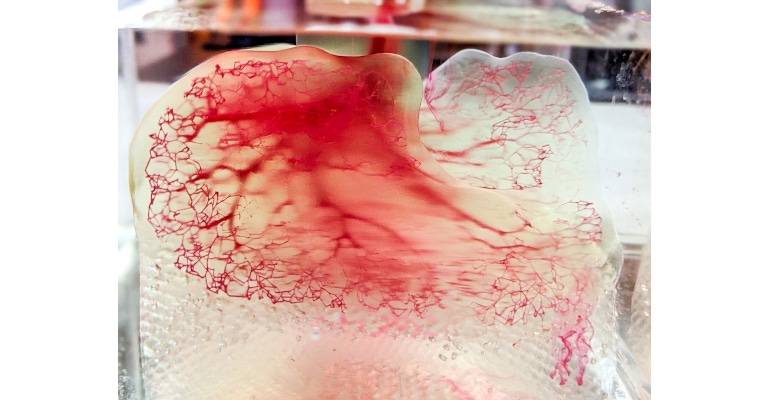Driven by progress in its collaboration with United Therapeutics in developing 3D printing systems for solid-organ scaffolds, 3D Systems intends to further develop and commercialize solutions in the regenerative medicine field.
March 8, 2021

Years ago, when 3D Systems and United Therapeutics formed a cooperative project that sought to find a way to address the shortage of transplantable lungs, they began to look at regenerative medicine as a possibility. “It kind of started out as a moonshot, ‘Could this be possible?’ and we’re far enough into it now that we know it is possible,” said Chuck Hull, co-founder, executive vice president, and chief technology officer at 3D Systems, in an interview with MD+DI.
Although he could not give an exact timeline for when the lung project would be available, Hull said that this collaboration with United Therapeutics has made so much progress that 3D Systems decided to look at regenerative medicine for other tissues as well. “Not just solid organs, but also lesser tissues that can be produced with bioprinting regenerative medicine,” Hull said. “So that's kind of the juncture where we are right now. We've been following this field—it’s a nascent field—but it appears to be a real promising field for our company.”
3D Systems also has a cooperative R&D agreement with CollPlant Biotechnologies, which has developed a method to grow human collagen in a tobacco plant. “They can extract the collagen from that to make this pure human recombinant collagen,” Hull said. “Any process where you want to use collagen, it's the ideal material,” he said, explaining that other methods of getting collagen, typically from animals, are not of a grade that is useful for regenerative medicine. 3D Systems and CollPlant are also looking into other tissues to possibly develop, Hull said.
One of the challenges in bioprinting is printing hydrogel materials, which are mostly water, Hull said. “In our case, we would print these hydrogels with very high resolution so that they can accommodate the locations for the cells that are going to be tissue,” he explained. “Our challenges are handling and printing hydrogel materials with high resolution, and the higher resolution you go, the slower you typically print, so the challenge is to have a high-speed version of this printed, fast enough to be practical,” he said, noting that each tissue is different from a biology and anatomy standpoint with unique sets of challenges to overcome.

“What we've done is developed higher-speed printing ways to do this,” Hull said. The company’s Print to Perfusion process enables 3D printing of high-resolution scaffolds that can be perfused with living cells to create tissues. Hull said that the technology ranges from 3D printing the hydrogels, to cleaning and preparing the scaffolds, then to perfusing them back with cells. “The technology handles these typically in place, so that you're not having to move around these delicate tissues to achieve this whole process,” he said.
3D Systems is already in the medical device space, Hull said, working with device companies to help them qualify and learn how to manufacture products such as titanium implants. Hull believes that a move into further regenerative medicine is basically an extension of that. 3D Systems intends to add additional regenerative medicine domain expertise to its team as well as expand its roster of partners.
About the Author(s)
You May Also Like



